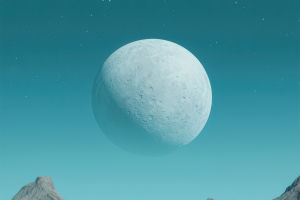The night sky captivates us with its dazzling stars and the serene glow of the moon. But do stars really twinkle? Does the moon create its own light?
The answers reveal fascinating truths about these celestial wonders.
Let's unravel the mysteries of the galaxy, stars, and our closest neighbor—the moon.
What Are Galaxies?
Galaxies are vast collections of stars, planets, gas, and dust held together by gravity. They stretch far beyond what the unaided eye can see.
Our galaxy, the Milky Way, gets its name from its hazy, milky appearance when viewed from Earth. It contains billions of stars and is just one of over 100 billion galaxies in the known universe.
The Andromeda Galaxy, our closest galactic neighbor, lies roughly 2.5 million light-years away. This immense distance is measured in light-years, the span light travels in a year, since regular units like kilometers would be impractical for such vast scales.
Stars: The Cosmic Giants
What looks like tiny flickers in the night sky are actually enormous spheres of hot gas. Composed mainly of hydrogen and helium, stars generate energy through nuclear reactions in their cores, producing the light that reaches us.
Here's a closer look at stars:
- The Sun: Our sun is a medium-sized star, situated about 150 million kilometers from Earth. It appears much larger and brighter than other stars due to its proximity.
- Constellations: Stars often form recognizable patterns in the sky.
- Ursa Major: Known as the Great Bear, it's home to the Big Dipper, a familiar northern hemisphere constellation.
- Orion: Inspired by a hunter in Greek mythology, it stands out as one of the most iconic constellations.
- Cassiopeia: Easily identified by its W shape, it is named after a legendary queen.
Why Do Stars Seem to Twinkle?
The twinkling effect, known as stellar scintillation, isn't caused by the stars themselves. Instead, it's a result of Earth's atmosphere. As starlight enters, it is bent and scattered by moving air layers, creating the illusion of flickering.
The Moon: Earth's Companion
Unlike stars, the moon doesn't produce its own light—it reflects sunlight. Orbiting Earth every 29.5 days, it goes through various phases, from a bright full moon to an invisible new moon.
Key Moon Facts:
- The phases depend on the portion of the moon lit by the sun as seen from Earth.
- Its gravitational pull has a profound effect on Earth, influencing ocean tides.
How the Moon Affects Tides
The moon's gravity creates a bulge in Earth's oceans, pulling water toward it. This phenomenon leads to high tides in the direction of the moon and on the opposite side of the planet. As Earth rotates, these gravitational effects result in two high tides and two low tides daily.
The cosmos offers endless opportunities to learn and marvel. From the vastness of galaxies to the moon's daily influence on our planet, these celestial bodies connect us to the wonders of the universe. The next time you look at the stars or moon, take a moment to appreciate their beauty and the science behind it.


